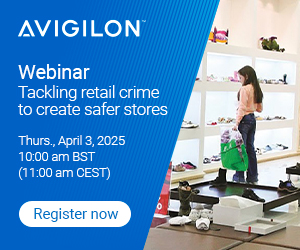Interviews
It’s a Wrap When It Comes to Creating Safer Working Environments
Pret A Manger is Not Only “Ready” with its Fresh Approach to Food, But Has Invested in the Vital Ingredients for Greater Colleague Welfare
What’s in a name? Well, quite a lot when you unpack the meaning and rationale behind some of our iconic high street brands. The names that adorn many of our restaurant and café emporiums often speak their own unspoken international language. There’s an almost emotional connection designed to be more about feeling than filling, where the everyday essential of food does all the talking, tripping tantalisingly across our tongues and taste buds.
Many destination retail and hospitality providers are looking for that point of differentiation by attempting to capture an almost impossible alchemy of something simple, exotic, and new. Those that succeed create that immediate ambiance as the customer walks through the door—a fresh approach to a traditional offering and one that boasts a matching très chic name to boot.
It’s easy to think that the latest boardroom buzzword acronym ESG—Environmental, Social, and Governance—is so-called Gen Z inspired, but some innovative baby boomer brands with an eye for being more than the product behind the counter and name above the door in terms of their approach to caring for their staff and the environment as well as their customers, were ready for action before their time. They managed to capture that certain “je ne sais quoi” in terms of both their product offering and blazing a corporate social responsibility trail long before the turn of the last century.
In the case of freshly-made sandwich and salad specialists Pret A Manger, where they make a virtue out of breakfast and lunch “never being boring”, this was in 1996, when it created The Pret Foundation, one of the first high street waste reduction strategies in the UK. The idea was to collect and distribute its high quality leftover product at the end of trade—everything is freshly made on the premises throughout the day—to charity to reduce hunger for the homeless and reduce the UK’s unwanted food moutain.
History
In this respect and in every other part of the business, Pret A Manger is an aspirational brand and destination and has become a much-loved British institution. Although French by name, the brand was very much created on this side of the English Channel and is now successfully exported all over the world.
Simply translated as “Ready to Eat”—a derivation of prêt-à-porter (“ready to wear”) its name was the inspiration of Valerie Tomalin, the sister of Pret’s founder, the late food pioneer Jeffrey Hyman who created the brand in 1983 while he was still a senior executive at the Rank Hovis McDougall Group.
Hyman opened the first Pret A Manger
shop, opposite Hampstead underground station in October of that year—taking his inspiration for the concept from the Parisian “traiteurs”—the ready-to-eat outlets serving gourmet food-to-go. An international foodie with an eye for eye-catching aesthetics from his travels, the iconic store design was “magpied” from steel-and-chrome upmarket sandwich bars around Manhattan which Hyman visited on frequent food research missions.
University Challenge
But what is now a multi-million-pound enterprise had something of a false dawn when the early excitement did not reflect in footfall and till takings, so when income fell below break-even point it went into administration after just eighteen months.
However, the new owners of Pret—the loving abbreviation by which it is today known by just about everyone—had other ideas. The brand may mean “ready to eat”, but it was far from “ready to quit” the high street in their view.
With youth as a major target, the name and visual branding was purchased from the company liquidator David Rubin by two university friends Sinclair Beecham and Julian Metcalfe, who resurrected the original dream and opened their first Pret A Manger in July 1986 at 75b Victoria Street in London. Ready for the “ready to eat” challenge, they were the driving force in developing the chain’s menu of handmade natural food, “prepared in shop” kitchens, the trademark USP’s of the brand.
Building on Hyman’s dream and format—the outlet they bought had its own kitchen and offered fresh and simple main courses as well as mini-quiches, filled baguettes, croque monsieur and other ready-to-go convenience foods that have now become regular classics—Beecham and Metcalfe evolved Hyman’s café-chic idea of a small dining area for “stay in and linger longer” customers, to eat and drink at the front of the store. They also retained Hyman’s iconic logo which is still in use today.
Ready to Help—People versus Poverty
It was also the partnership of Beecham and Metcalfe that resulted in the set-up of The Pret Foundation in 1996 to help assist those living below the breadline in the UK.
The Pret Foundation has awarded over £7 million to over one-hundred charities across the UK, tackling homelessness, hunger, and poverty.
In 2008, The Pret Foundation launched its “Rising Stars” programme, which supports people at risk of homelessness—including former prisoners and refugees—with sustainable employment in Pret shops, training, free travel, gift cards to buy new clothes, and peer-to-peer weekly support groups.
To date, more than 750 people have joined “Rising Stars”, with 80 per cent completing the twelve-week programme. Some “Rising Stars” have gone on to become shop managers or have been recruited at Pret’s head office in London, which is lovingly known as “75B” after the address of the first shop in Victoria.
Rapid Growth—Here, There, and Everywhere
London may have provided the launch pad for Pret’s growth, but the brand’s ambitions and horizons went well beyond the capital both in terms of global locations and menus.
The first shop outside London was opened across the Atlantic on Broad Street, New York in 2000 and, following the American dream, there were 74 Pret shops across the United States by 2016.
At this time, Pret’s group sales were £776 million and continuing to grow, which made it an attractive proposition for JAB Holding company, another private equity company who acquired it in September 2018 from Bridgepoint.
Value Today
All of these growth ambitions were vital ingredients in the success of today’s Pret, which last year announced half year revenue of £429.9 million, growing by 20.2 per cent compared to the same period in 2022 (£357.8 million). In the first half of the year, Pret reported record sales weeks in May and June, driven by the success of its expanded subscription offer—Club Pret—launched in April 2023.
In its 2023 annual report it said: “The group returned to profitability in 2022, reporting an annual operating profit of £50.6 million, its first shift to profitability since 2018 (£19.6 million). The latest results reflect the success of Pret’s transformation strategy, with the ambition of bringing Pret to more people—both in the UK and around the world. Pret is tracking ahead of its mid-term growth target announced in September 2021 to double the size of its business within five years. It has entered seven new international markets since 2021, surpassing its target of five new entries by end-2023, with international sales now accounting for 18.9 per cent of revenue.”
Staff Safety Today
Just as the brand has put growth front and centre of its strategy, it has continued its people-development and safety strategy both in terms of the charities it supports through the work of the Foundation and its own colleague care.
Day-to-day, it is the job of Mark Wood, UK security and standards manager at Pret, to help keep colleagues safe. It is these colleagues who service the UK’s 450 owned and franchised shops on the high street and at transport locations including all of the major airports.
“Safety of staff is a top-down agenda item—it is part of the values of the business,” said Mark who sits within the people team in the UK which is led by Sergio Bachs, UK people director.
Mark’s role is the physical security of the business and its people and premises.
“We believe that happy teams mean happy customers,” said Mark who has worked for Pret for almost two decades.
Culturally, the business focus is upon two-way communication, being kind, honest and open.
“It’s not a dictate from head office, but constant learning from our great general managers about what we can
do to support them and deliver excellence as part of a broader team effort,” he said.
“We conduct regular surveys as part of Pret’s “Big Conversation”, and take on board all of the feedback.”
Prior to his security role, Mark worked in store operations, so he saw first-hand the types of challenges colleagues representing young, diverse, and divergent personalities as well as cultures from across the global estate face every day.
“I’ve grown up with the company and I continue to develop with it,” he added.
“Although I’ve been with the business for eighteen years, I learn something new every day. That’s because we have listened to our managers and what they need, and that includes keeping them safe,” he continued.
“Twice a year we have buddy days, when those in the support centre go out and work in shops on everything from serving customers to making sandwiches, so we get a true reflection of what happens in stores every day.”
Getting it right in terms of the right safety tool kit is not a quick fix but a sustainable long-term approach.
“It’s a journey that involves reviewing policies, carrying out extensive risk assessments and training in areas such as conflict management both as e-learning modules and face-to-face. It is only then that we look at what strategies and technologies will best support our people and our business.”
Mark is always looking for ways to give colleagues more reassurance, including investing in new technologies that will work for the Pret business.
“The solutions have to be scalable, because some of our venues are tiny while many have a much larger shop footprint.”
Attending the ORIS Forums Risk Summit in Stratford-upon-Avon in May 2023, Mark was introduced to John Seddon, senior business development manager at people protection specialists Peoplesafe.
A year on from that conversation, all equity shops have access to Peoplesafe’s lanyard-based portable personal safety technology, which allows colleagues to activate an audio recording device to capture and de-escalate incidents in the shops. Pressing the button activates an alarm at Peoplesafe’s 24-hour alarm receiving centre (ARC) which listens in and then triages the call including dialling 999 when necessary.
“It’s easy-to use—store colleagues simply wear the lanyards and activate them in line with their training when they need to. That alerts Peoplsafe’s ARC who can listen in,” said Mark.
“There is no IT integration or involvement and I get access to all of the audio for evidence purposes simply at the push of a button via the online Nexus management platform.
“Its introduction has had a positive impact across the business.”
Each shop has two devices, one with the manager and another at the counter. With 10,000 colleagues, the devices complement the other conflict management training that all colleagues go through as part of their induction.
Mark, who had previous roles with Sainsbury’s, McDonald’s, and IKEA as well as becoming a Special Constable in the police, added: “The feedback we have had back from our team about the Peoplesafe device is that it is easy-to-use and it gives the team re-assurance that there is always someone there.”
This colleagiate approach would have only come about as a result of 360 degree communication with store teams.
“We learn from our great people because we go out and about more to understand what is going on. We are all on the same journey and that has enabled us to deliver the right support for our store teams.”
The Peoplesafe devices support Pret’s other safety priorities, investing in quality CCTV, conflict management workshops and risk e-learning modules.
John Seddon from Peoplesafe added: “For Mark, whatever occurs, there is a better record and response, and the staff feel more re-assured and respected by their employer.”
“Since we went live, I’ve walked around a number of stores and spoken to staff and everyone knows what the device is and how to use it,” John continued.
Cost Effective
Such innovations represent good value for businesses.
“The monthly cost is not much more than a cup of coffee, but what cost do you put on your staff safety? For the cost of a manned guard for one week, you could roll out five of these devices for a whole year,” added John.
There is always a lot to be read into a name, and Pret A Manger has certainly found its sweet spot in the hearts of its loyal clientele as it continues its upward trajectory while never forgetting its guiding principles of freshly-made products and its safety pledges to the colleagues it wants to train and retain. Its people-centric approach is a menu that possesses all the right ingredients for success and the appetite for being ready for just about anything.







